20 Must have school lab equipment for CBSE ICSE Affiliation
As the nation becomes greater, the education system is evolving with time as well. As per the National Education Policies that we have brought in, practical education is taking the front gradually. And to implement proper practical education in your school, you will need a good science lab equipment list to shop for. Today, we will talk about 20 must-have school lab equipment for CBSE/ICSE affiliation.
Every student has a fond memory of their first practical class experience. Do you remember yours? The odd room in the building full of weird-looking equipment and glassware, the confusing smell, and students actually working with their hands instead of just poring over books! From secondary to senior secondary levels, a student gets to experience one of the most important aspects of education ‒ hands-on learning.
Learning to recognize all the basic lab equipment and apparatus is paramount to this lands-on approach to education. They form the base of all future lab work, be it in school labs, colleges, universities, research labs, medical labs, or even in fieldwork for scientific research work. This is why it is important that every student learns to recognize the following lab equipment, apparatus, and glassware and know how to use them properly.
20 Common Lab Equipment List
1. Microscope
Probably the most iconic in the laboratory industry, a microscope lets you see things so small that they cannot be seen normally by the human eye. In school labs they use standard compound microscopes, also known as light microscopes.

A light microscope or compound microscope enlarges the virtual image of the specimen you want to view using two strong convex lenses poised one over the other. Their working principle comes from the refraction of light. The other parts of a microscope perform various duties such as holding the lenses and controlling their movement, holding the sample, providing illumination, etc.
Learn how a microscope works in this blog .
2. Test Tubes
Another iconic piece of lab equipment, the test tube is the most commonly used glassware in almost every wet lab in the world. They are small tubes with one end open and the other end closed, about a finger wide, and are generally made of borosilicate glass.

Test tubes have a bewildering variety in shapes and sizes, but the most common version you will see is like the above. These are standard lab test tubes of 150mm by 18mm size, and you can do most chemistry and biochemistry experiments with these. Another common version of test tubes is the stubby plastic ones you see in pathology labs, called sample collection tubes.
3. Beakers
What would a chemistry lab be without a beaker? These multipurpose glass vessels are easy to handle and easy to clean. They are glass cylinders with a flat bottom and straight sides. The opening may or may not have a lip to facilitate easy pouring. Beakers come in every size from tiny 20 ml cups to liter-sized buckets, and everything in between ‒ but 250-500 ml beakers are most common.

Beakers are very much favored in labs because of their ease of use. With the flat bottom and straight sides, they are very stable on most surfaces and best for boiling stuff safely; and with the large opening, you can pour things in or out of it, or stir the contents. However, that large opening also makes it unsuitable for storage purposes – use flasks for that.
4. Magnifying Glass
When you need to see tiny objects (that are still too big to fit under a microscope), what you need is this ancient magical device that magnifies anything you hold under it. A magnifying glass has a large convex lens that creates the enlarged vision, and a steel frame with a wooden or plastic handle that holds the magnifying lens.

A magnifying glass works with the principle of virtual image creation due to the refraction of light. The centerpiece of a magnifying glass is a convex lens (a round slab of glass fat in the center and progressively slender towards the edges). When light passes through it, a larger-than-life image of the objective is created behind it, which we see from the other side of the glass. The wooden or plastic handle, attached to the lens with a metal or plastic rim, helps you to hold the magnifying glass steadily.
5. Volumetric Flask
When you need to measure liquids, there are few better options in the school chemistry lab than the volumetric flask. It is a glass container with a large belly and narrow neck that is crafted to a precise volume. They come in different sizes, from 100 ml to a liter. Each is calibrated to hold a precise amount of liquid at a given temperature.

The large bulbous body in the bottom, which may or may not have a flat bottom, holds the most amount of liquid. The side may be marked with a graduated scale to measure exactly how much liquid is there in the flask. Volumetric flasks are generally used in chemistry laboratories to make standard solutions, with the help of precision balances . Other than that, you can also store liquids in them for a long time.
6. Bunsen Burner
Introducing every lab dweller’s favorite fire-maker! This valuable lab apparatus produces a single, clean flame using LPG or propane (though LPG is much safer) gas. The flame is very useful in various heating and sterilization purposes in a lab. A laboratory often needs a lot of things heated or boiled, and a bunsen burner was tailor-made for this purpose. It runs on easily available fuel and can reach a fairly respectable temperature, unlike a spirit lamp.

The bunsen burner produces a single clean, steady, sootless flame of high temperature, and that’s why it is so well-favored in laboratories. It is relatively safe to use when used with caution. Most burners are connected by gas hoses to a single distribution point on a lab workbench , which includes internal plumbing for the gas distribution network.
7. Dropper
Also known as the Pasteur pipette, the dropper is a very common apparatus used not only in laboratories but also in everyday homes. It has a small long cylindrical body made of glass or pipe with a narrow nozzle at one end, and a soft rubber bulb mounted on the other side. You can use this to take up some liquid and slowly drip it down in another place.

Pipettes are the big brothers of droppers and you can take up larger amounts of liquids in them. Both pipettes and droppers have special cleaning procedures, and you will need a bit of training before you can properly use them in a laboratory safely.
8. Thermometer
Many experiments depend greatly on the precise temperature, so you need a thermometer to measure that out. Some experiments require a certain temperature range before anything can happen, or the intended reaction can take place. In this case, you have to dip a thermometer in there to see if you have reached that temperature or not.
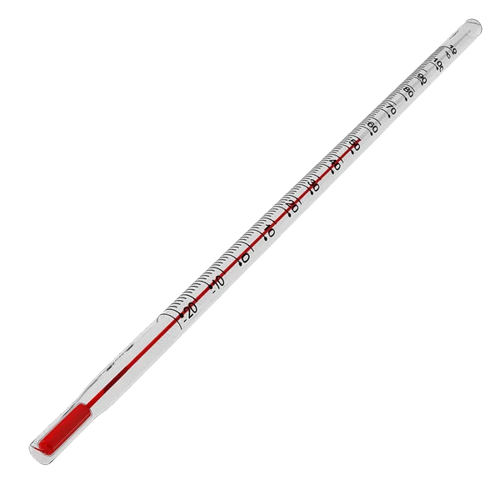
The thermometers that we generally use in laboratories are analog types, though there are digital versions out there as well. It is a pencil-thin tube of clear glass with graduated temperature readings with a hairline bore through its middle through which the indicator liquid rises. It works on the principle of thermal expansion of liquids.
9. Tongs
Perhaps not as glorified as other lab equipment and apparatus, the tongs are still very much important once you face the situation. Many fingers have burned due to careless handling of hot or dangerous substances in labs. Tongs are used to grasp and lift hot glassware and apparatus, and other hard substances. Therefore, make it a habit to handle things with tongs unless you are absolutely sure otherwise.

Strictly speaking, tongs are not exactly a lab safety apparatus, but they indeed save you from a lot of harm. There are two kinds of tongs used in labs – larger ones with a hinge, and small tweezers. Both are coated with non-reactive material so that they can resist corrosion up to a certain extent.
10. Brushes
Not many people know it, but cleaning things are one of the biggest portions of everyday lab life. Keeping glassware and apparatus clean is the first step to achieving precision and perfection. For this purpose, all labs have different sizes and types of brushes to clean lab apparatus and glassware. The bottle brush is the most common since it can fit through the narrow mouths of long narrow glass vessels.

Though brushes are cleaning apparatus, don’t forget to clean the brushes themselves after your cleaning spree! Otherwise, next time you try to clean something with the same brush it will get dirtier instead. What’s worse, if the substances are reactive, then you may be looking at a potential accident. So, clean your cleaning equipment too – it makes sense.
11. Weighing machines
When performing experiments in chemistry or biology laboratories, we sometimes have to deal with very small but precise amounts of chemicals. Normal balances are unable to measure to that precision, so we use electronic balances and weighing machines. When you need to measure the exact amount of a reagent or a solute (mostly in the case of preparing standard solutions), use a proper electronic balance.

There are two kinds of lab weighing machines – precision balances and analytical balances. Precision balances are the most common and they can measure milligrams. Analytical balances are, however, so sensitive that even air currents can disturb them. This is why they have a glass box enclosure over the weighing plate. Analytical balances can measure parts of micrograms.
12. Wash bottles
Remember what we said about cleaning laboratory things before? The wash bottle is another important cleaning apparatus that you may have to use every lab session. They are soft plastic bottles with long thin nozzles that can squirt cleaning fluid into glassware to dissolve stubborn substances and gunk that form inside after experiments.

Wash bottles come in various shapes and sizes as well, just like most lab glassware and plasticware. The 100 ml and 250 ml sizes are the most common. They generally contain distilled or deionized water, or in case of worse gunk, ethanol.
13. Spatula
So, you have lots of salts and bases in various jars ‒ but how do you pick them up, using your bare hands? That’s never a good idea, you know. That is why we use steel spatulas. They are like spoons, really, with a flattened spade-like end.
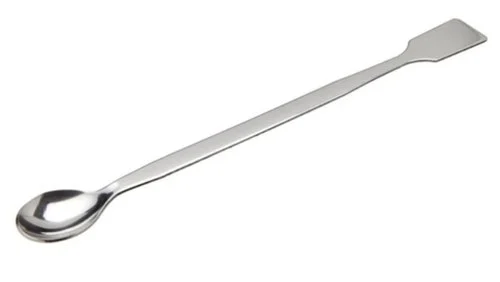
These spatulas are generally made of stainless steel, so they are mostly resistant to chemical effects. The scoop end helps to scoop up material, while the spade end helps to break up large blocks of crystallized substance.
14. Spring balance
Also known as the Newton balance, this is another useful object in measuring weights of rather larger objects. The spring balance is basically a strong spring hanging from a holder loop with a hook at the bottom end. The spring is encased in a long plastic case with a scale and indicator. As you hang a weight on the hook, the spring stretches and the indicator stuck to the spring moves to show the value of the mass on the scale.

A spring balance works on the principle of Hooke’s law. According to that, the force applied to the spring is directly proportional to the spring’s extension (under the elastic limit, of course). The spring, the hook, and the holder are all made of stainless steel, generally. They come in various strengths ‒ some are soft enough to measure mere tens of grams, and some can lift tens of kilos.
15. Burette
A burette is a long glass tube with a stopcock at the bottom ending in a small nozzle, and the other end open. The sides of a burette are generally graduated with a printed scale to show how much liquid the burette is holding. The apparatus cannot stand on its own; it must be supported by a clamp on a stand.

The burette has one great purpose ‒ to slowly add a precise amount of liquid to another apparatus. Many reactions require careful adding of precise amounts of liquid ‒ think of titration where you have to slowly add acid or base to a standard solution till you get full equilibrium. The stopcock handles the task beautifully! But do remember to clean the apparatus carefully after each use.
16. Watch glass
Most commonly found in the chemistry laboratory, this is just a concave round piece of glass. You can keep some solids here for easy access, evaporate liquids, and heat a tiny amount of solution or substance (often used to make anhydrous versions of salts).

17. Funnels
You know funnels, we know funnels, everybody knows funnels. This household apparatus is quite well available in most laboratories since you have to often pour liquids and powders in narrow-mouthed containers like test tubes and flasks.
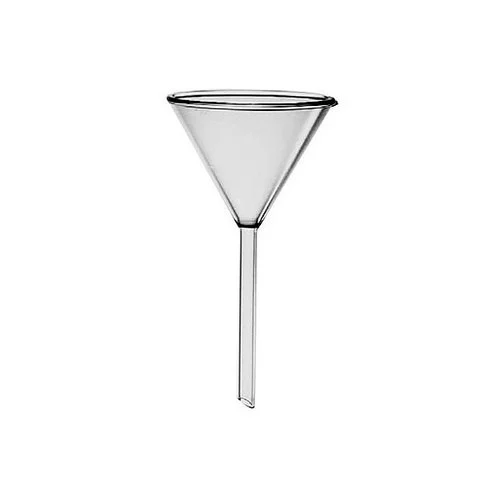
Though quite common in households, a chemistry lab should have quite some different types of funnels. There is the standard conical funnel, which you can turn into a filter funnel by adding a filter paper. There is the thistle funnel for special purposes, and there is also the dropping funnel for rather precise work.
18. Ammeter
One of the most common instruments a physics lab cannot do without is the ammeter. Since most electricity-related experiments need to measure the current flowing through a circuit, the ammeter comes out of the box quite often (or doesn’t go in at all in busier places).

An ammeter is a galvanometer with almost no resistance put in series to the circuit. Ideally, the ammeter should not have any resistance at all, but in reality, there is always just a little bit of resistance there.
19. Crucible
Sometimes, in a chemistry lab, you will have to heat a substance at a very high temperature ‒ with such heat that glass will surely melt. In this case, you can’t use standard glassware, obviously. You have to use a crucible, which is basically a small porcelain bowl.

A porcelain crucible can withstand such temperatures that you can even melt most soft metals in it. Though you have to handle them carefully all the time (duh), they come in very handy at high-heat reactions. Beware of a crucible sitting alone somewhere ‒ it can look innocent but be scaldingly hot.
20. Litmus and filter papers
Though they are not lab instruments per se, they are still very much needful lab consumables used almost every day. There are many experiments that require filtration and almost any reaction including acids or bases requires a pH value reading. These two little things come in very handy in these matters.

When a given liquid has some solid stuff floating around in it, your best bet is to run the liquid through a filter paper using a funnel, thus the solid part will be blocked by the filter paper and the liquid will pass through. And dip a litmus paper in almost any liquid to see how acidic or alkaline that is.
In conclusion
This list of 20 common lab equipment and apparatus will come in very handy if you are trying to build a composite or science lab in your school. They are used in almost any laboratory and everybody taking a scientific career should learn how to use these lab apparatus and equipment properly. Labkafe has these in almost every lab package they sell, just write to [email protected] to find out how much they cost.
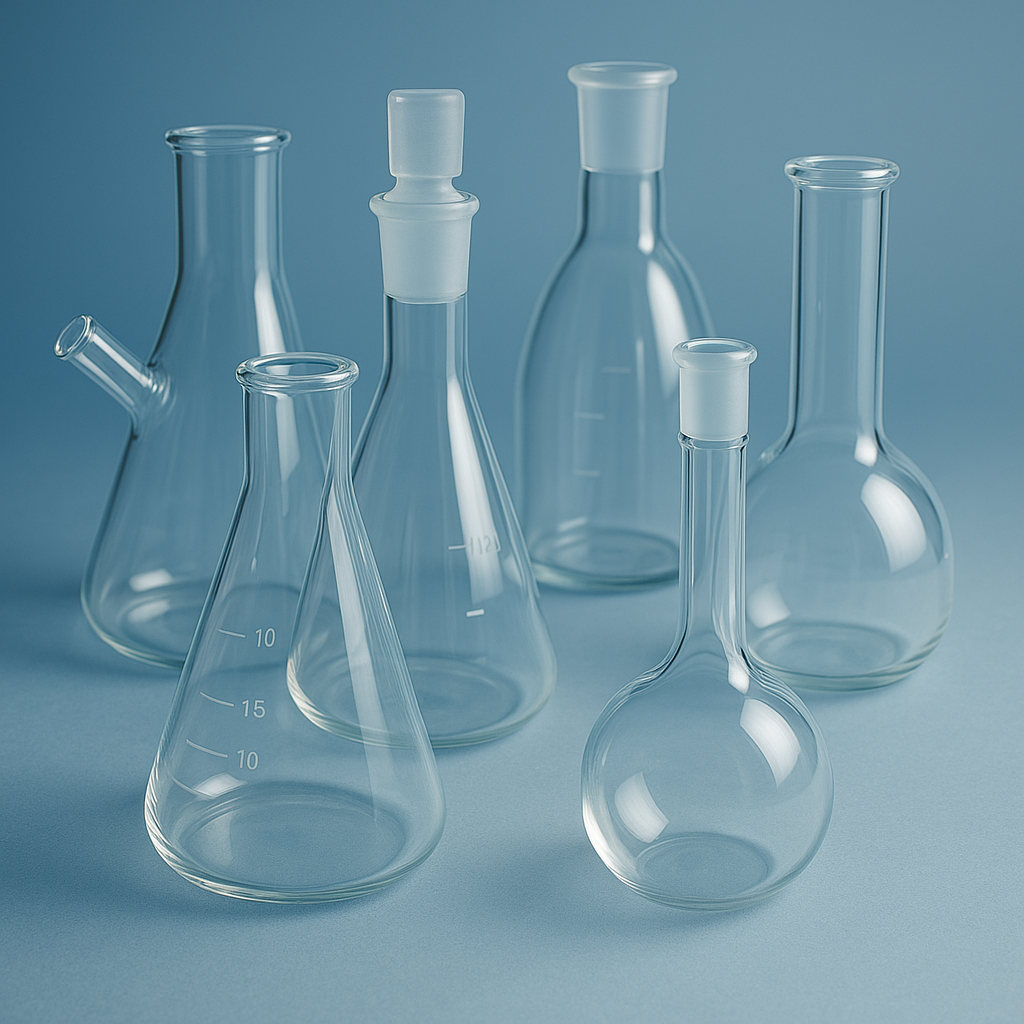




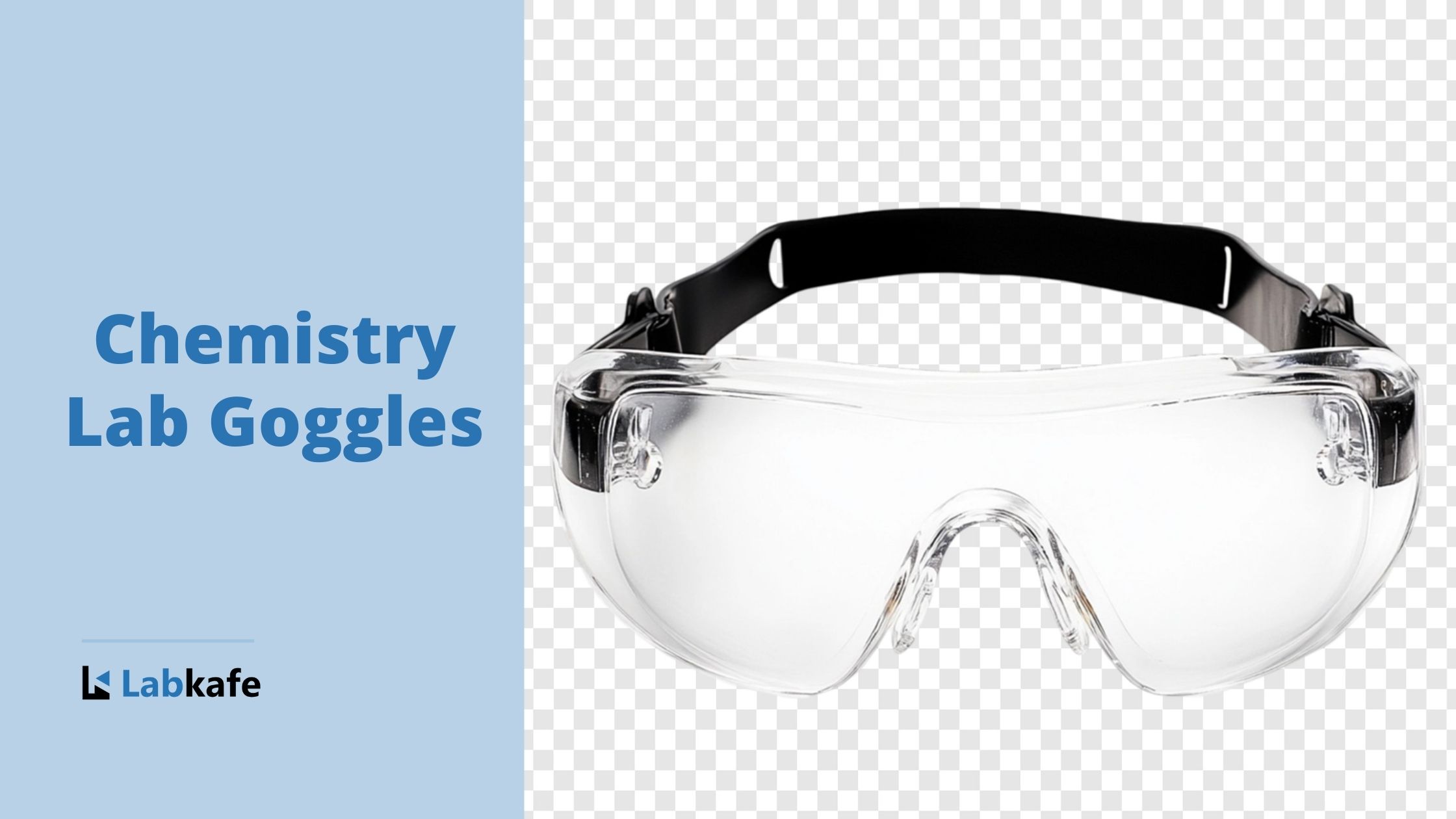


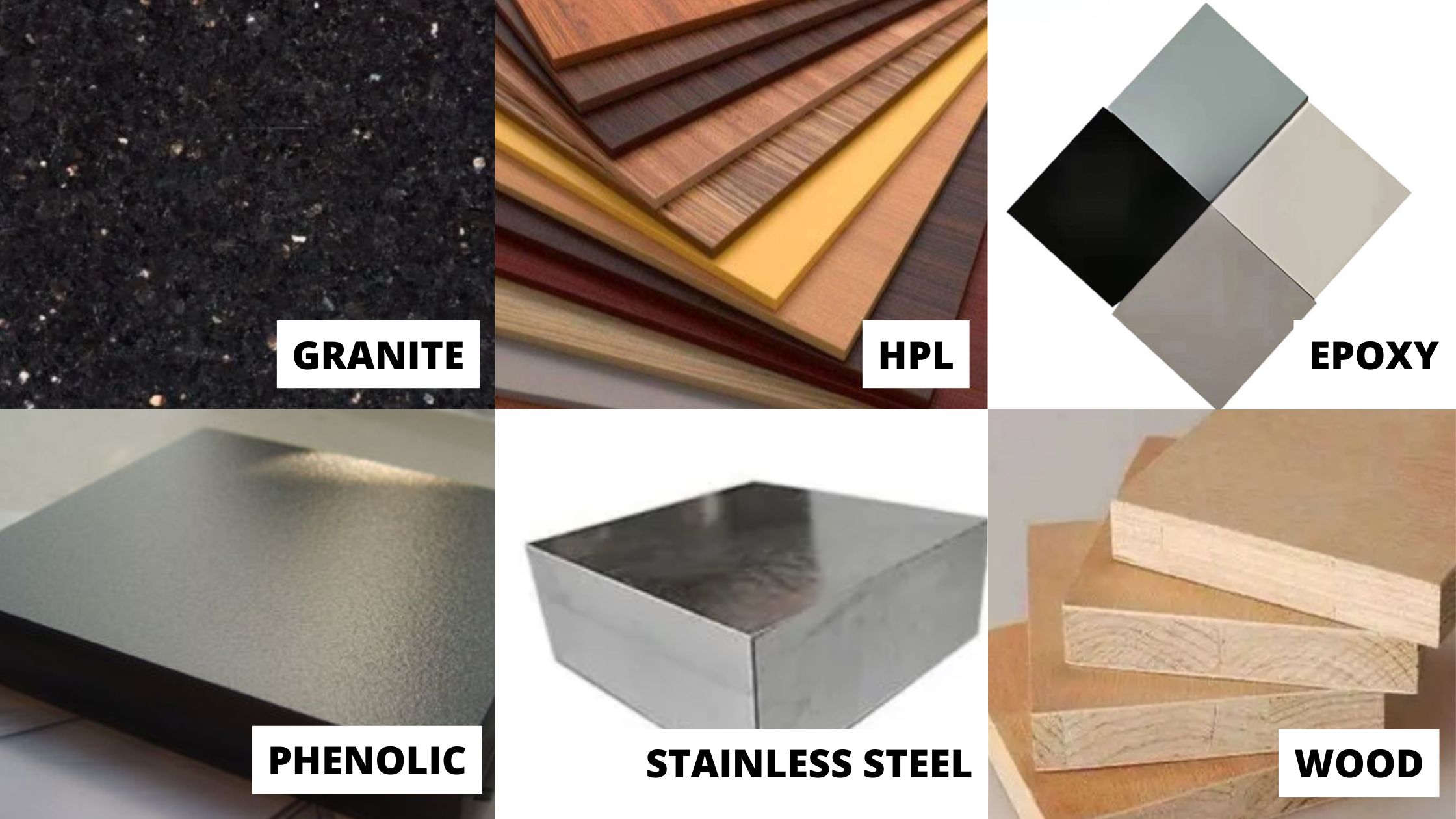
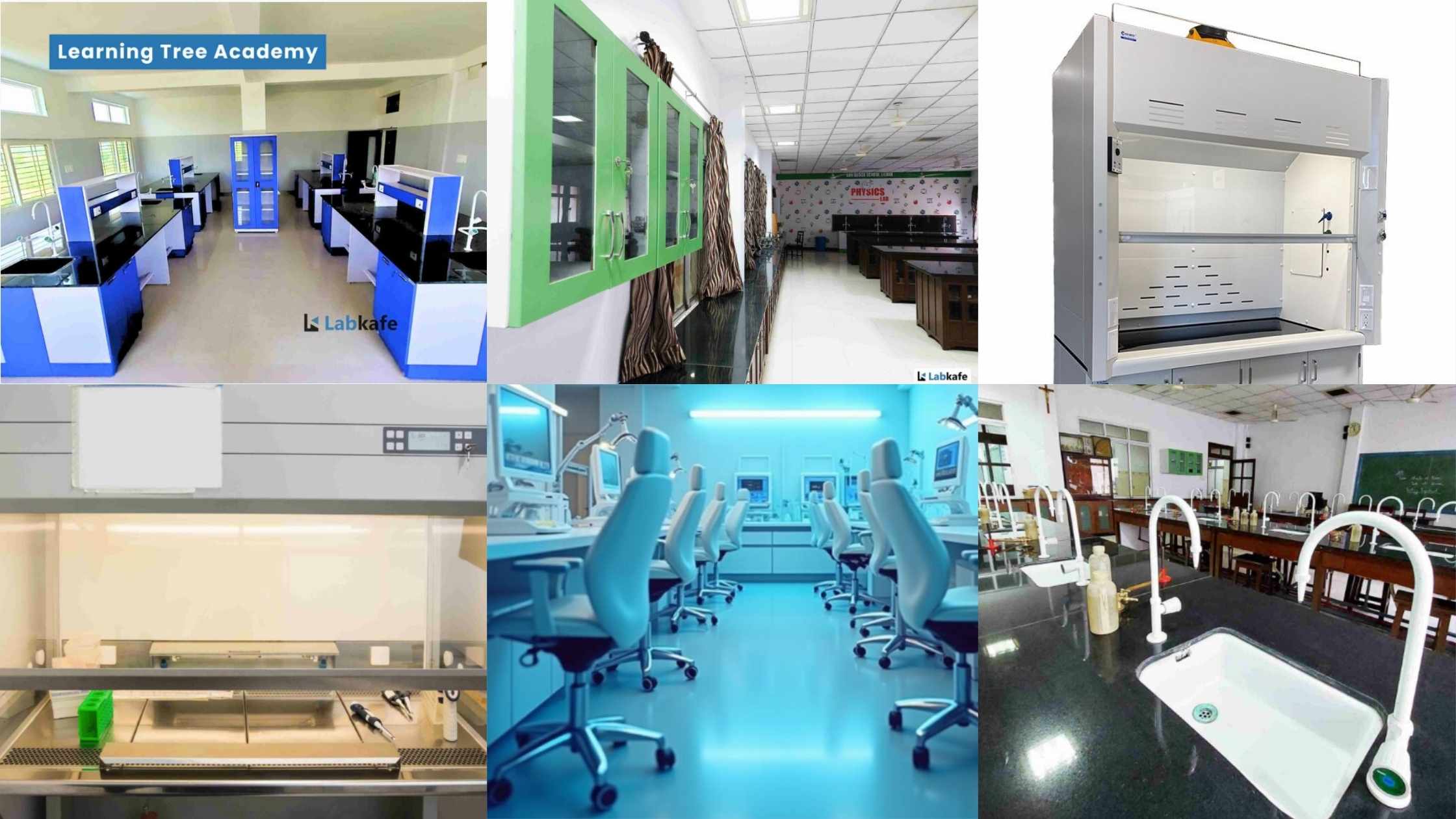


Leave a Reply